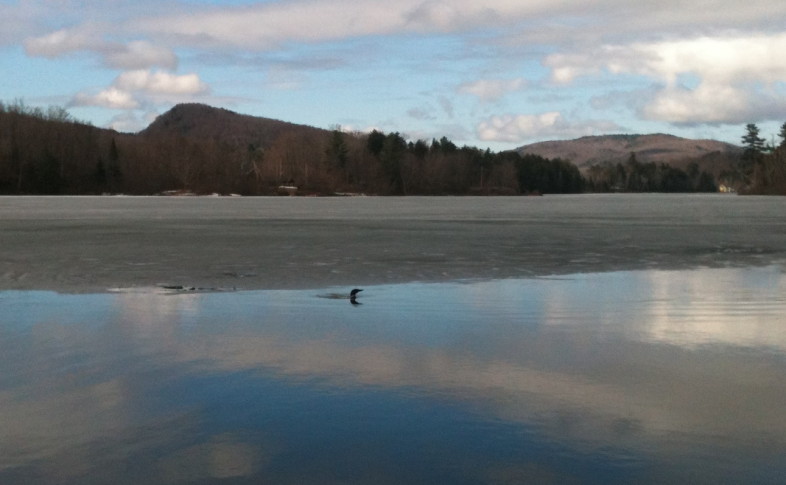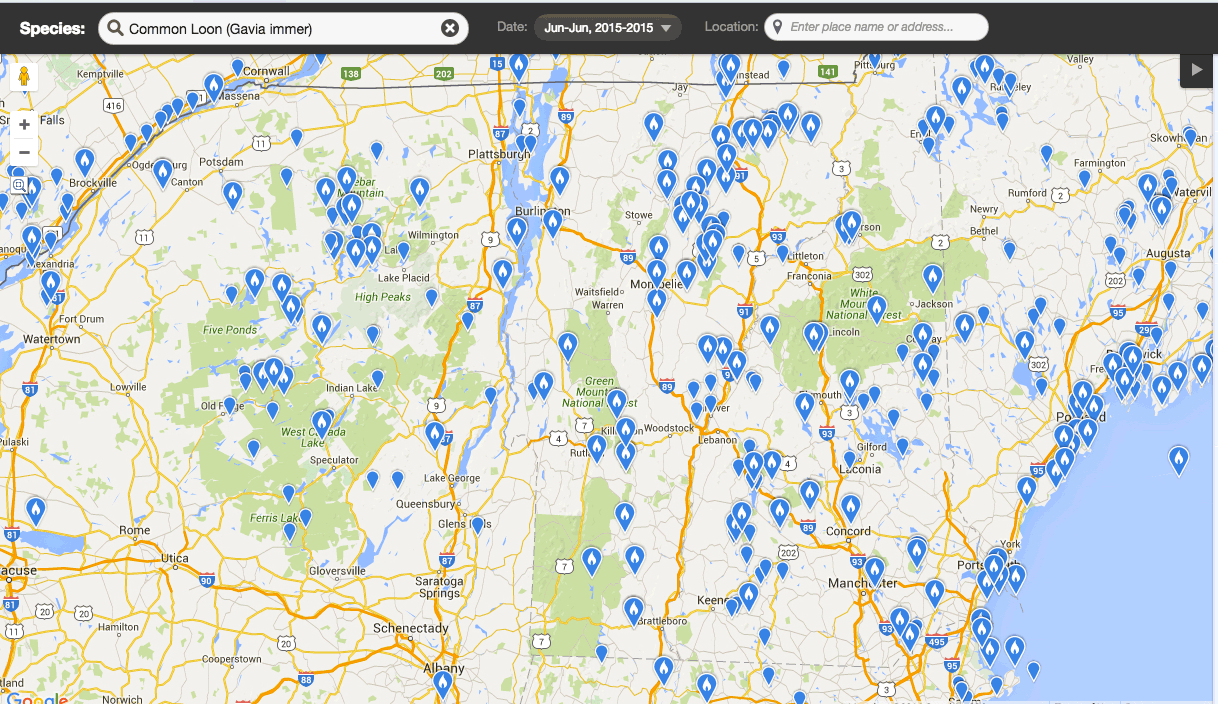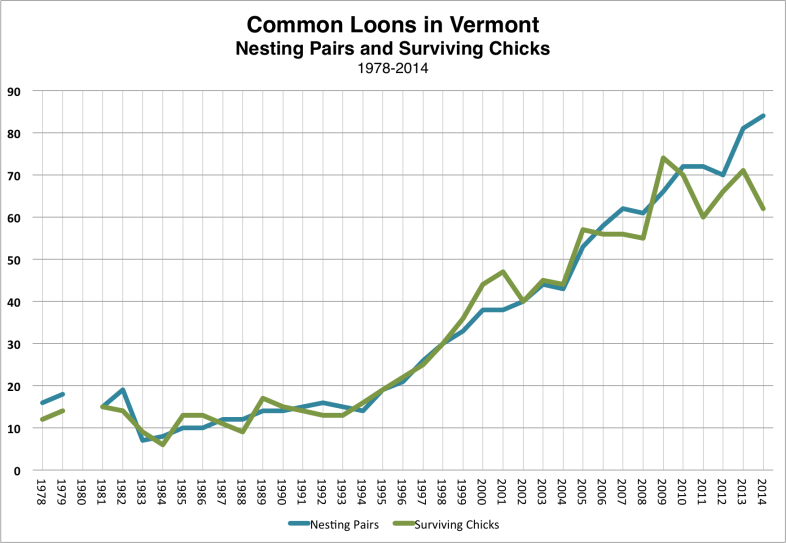
Loon waiting for ice-out on Lake Eden
With the ice giving way to open waters on Vermont lakes in April, Common Loons are returning to their breeding homes. Few North American birds can evoke in us the wild, visceral, and pleasing sensation that comes from being in the company of a Common Loon. Loons are proof that birds need not be colorful to be beautiful. Floating in black and white on a northern pond, the Common Loon is one of our most iconic expressions of life in the north. And you can help us keep it that way.
Please add your all of your loon encounters to the growing collection of data contributed by casual and expert birders alike on Vermont eBird. A real-time, online checklist program, since 2003 Vermont eBird has revolutionized the way that the bird-watching community reports and accesses information about birds. Through user-submitted checklists, Vermont eBird documents the presence or absence of species, as well as bird abundance. A simple and intuitive web-interface engages hundreds of Vermont bird watchers to submit their observations or view results via interactive queries into the Vermont eBird database.

Common Loons return to their breeding sites in April. Vermont birders help track loons by adding their sightings to Vermont eBird. This animated map shows loons sightings reported to Vermont eBird from June 2015 until mid-April 2016. Each marker indicates locations where loons were sighted. Red markers are those sightings seen within the last 30 days. Help us track loons by adding your sightings.
From a mere seven pairs three decades ago, Common Loons now number more than 70 breeding pairs in Vermont. This conservation triumph came only with a collaboration among people and organizations across the state. The Common Loon’s success story is an example of citizens and scientists working together in conservation.

Number of Common Loons and surviving chicks each year in Vermont.
Although they are iconic symbols of wild lakes and ponds, Common Loons, particularly in the United States, are vulnerable to nest disturbance and toxicity from lead sinkers and mercury. VCE’s conservation strategy recognizes the need to help people and loons coexist. Our chief partner in loon recovery and conservation is the Vermont Fish and Wildlife Department. Together, and with help from a corps of dedicated volunteers, we’re securing a future for Common Loons in the state. Our strategy features monitoring, management, and public outreach.
Help Us Monitor Loons
Our LoonWatch volunteers watch for loons. It’s that simple. And it’s a vital component of loon conservation in Vermont. LoonWatch exemplifies VCE’s passion for uniting citizens and science for conservation. LoonWatch volunteers can join us for a single day during our annual loon count in July or monitor a lake or pond on a regular basis. In each case, LoonWatchers provide VCE with essential data on the management, protection, and continued recovery of Common Loons across Vermont.
Here are some of the ways you can join us:
- Annual July LoonWatch – One the third Saturday in July of every year, LoonWatch volunteers take to the water to count loons. It’s the single most effective way for VCE to document and track breeding loons across the state.
- Adopt-a-Lake Program – Help monitor a lake with known loon activity. For lakes with nesting loon pairs, volunteers regularly monitor the nest weekly or every two or three weeks (depending on loon activity) from mid-May through August. On lakes with loon activity but no nests, volunteers visit and monitor the the pair one to four times a month from mid-May to mid-July.
- Casual Surveys – Good science includes not finding what you may be seeking. That means watching lakes without known loon activity to see if any loon pair might be investigating them for nest sites. These casual surveys are ideal for people who like to get out to lakes but may not have the time to consistently observe a lake throughout the summer. Casual survey volunteers also help us investigate lakes with loon activity but no regular monitoring.
- Loon sightings on Vermont eBird – Any loon sighting is worth recording for science. Whether you join a LoonWatch effort or not, please add your loon encounters to the growing collection of data contributed by casual and expert birders alike on Vermont eBird.
You can learn more about our work with Common Loons on our web site.

I would like to become a loon watcher via the “adopt-a-lake” program, if possible. Please send me information about which lake near me in Essex Junction, VT would be an appropriate one to observe breeding pairs. Thank you,
Dave